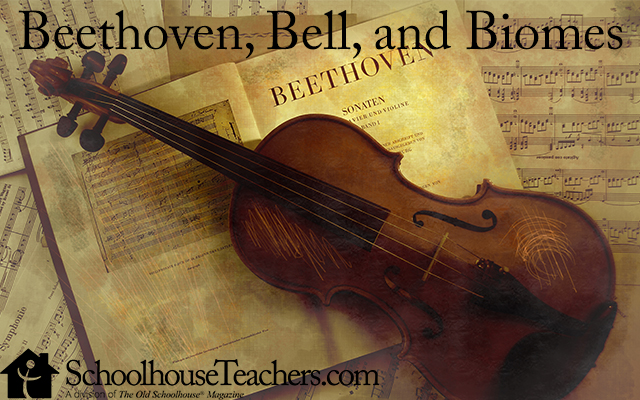Beethoven, Bell, and Biomes


Our world is a fascinating place. There are many different geographical features, cultures, languages, and people groups. Not only is our world literally shaped by things like volcanoes and earthquakes, but it is figuratively shaped by the people who have lived and who are living now. Elementary and middle school students can learn All About the World. This course introduces students to continents, capitals, landforms and biomes, major lakes and rivers, mountain ranges, political boundaries, and more. A wide range of activities is included to enhance learning, such as matching, decoding puzzles, multiple choice, map work, and even an international traders’ challenge. This geography courses consists of eight units, with each unit increasing in difficulty and grade level. Western Hemisphere Social Studies is another course designed for elementary and middle school students. It is a one-semester course designed to give a basic introduction to the diverse cultures and wide array of geological regions that are all part of the Western Hemisphere. The nations of North, Central, and South America are each discussed, as well as many islands and territories.
Some of the greatest musicians who ever lived are discussed in Great Musicians. This course for elementary students is based on a series of short books originally published in the early 1900s. Each book is written in simple, easy-to-understand language that brings the musicians to life for the readers. Each book concludes with simple comprehension questions and an optional story activity. Children can learn about Beethoven, Chopin, Mozart, Handel, Grieg, Haydn, Liszt, Schubert, Bach, Schumann, Verdi, and Wagner. In Scientists A-Z, elementary students can learn about 26 scientists throughout history. Each short lesson is followed by comprehension questions, activities, and additional resources that provide options for digging deeper. Some familiar scientists are discussed, as well as some not-so-familiar scientists, including Carl David Anderson, Alexander Graham Bell, Nicolaus Copernicus, John Dalton, Albert Einstein, Michael Faraday, Galileo Galilei, William Herschel, Irene Joliot-Curie, Percy Lavon Julian, Robert Koch, Pierre-Simon, Marquis de Laplace, James Clerk Maxwell, Sir Isaac Newton, Friedrich Wilhelm Ostwald, Louis Pasteur, Lloyd Quarterman, Jesse W. Reno, Frederick Sanger, Nikola Tesla, Ukichiro Nakaya, Virginia Apgar, Wilbur and Orville Wright, X-Ray Inventor: Wilhelm Conrad Roentgen, Linus Yale, Jr., and Frank Zamboni.
Tammie Bairen
Editor, SchoolhouseTeachers.com
A division of The Old Schoolhouse® Magazine





































